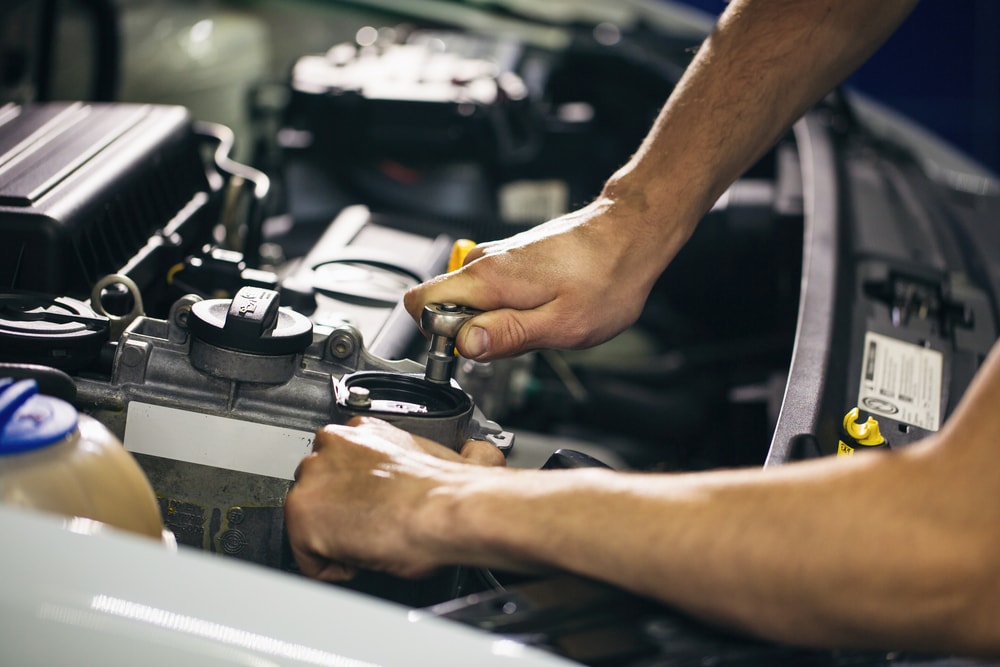How does automotive technology elevate motorsport performance to new heights? This pivotal query underpins our exploration of the innovations that have redefined race car capabilities—from aerodynamics and engine power to advanced materials and beyond. Here, we address the role of automotive technology in enhancing motorsport performance, positioning technological development as the silent co-driver in motorsport’s quest for victory. Brought to you by the used car yards Perth professionals this article is intended to guide you through these ground-breaking advancements, laying the groundwork for the in-depth examination to come.
The Evolution of Race Car Aerodynamics
Long before the roar of Formula 1 engines echoed through race tracks, the automotive industry recognized the significant obstacle air posed to automotive speed and economy. This understanding laid the foundation for aerodynamic car designs. The 1930s saw the spark of the streamliner craze, ignited by Hungarian engineer Paul Jaray’s application of aeronautical principles to automotive design. Racers and vehicles like La Jamais Contente became symbols of the push for aerodynamically aided speed records.
The Chrysler Airflow and German Rumpler Tropfenwagen introduced more streamlined designs and lower drag coefficients. These designs were further advanced by the Tatra T77 and the Schlörwagen prototype. The construction of modern roads and the pursuit of higher average driving speeds, particularly in Germany during the 1930s, only fueled the rise of vehicular aerodynamics and the development of road cars.
The stage of Formula 1, as well as the World Rally Championship, served as major platforms for aerodynamic evolution. Teams utilized Computational Fluid Dynamics, wind tunnel testing, and collaborative efforts to create cars optimized for speed and downforce. Regulatory constraints in motorsport dictated the boundaries of aerodynamic development, spawning highly creative solutions from engineers seeking to gain competitive advantages.
A notable example of the significant role aerodynamics play in enhancing motor racing performance is NASCAR. The organization’s continuous aerodynamic advancements, aimed at achieving higher track speeds, have set a benchmark in the racing world.
Pioneering Engine Technology in Motorsport
The heart of any race car is its engine, and this vital component has undergone several transformative stages in Formula 1. From early atmospheric and supercharged engines through the V12 and turbocharged eras, each evolution has been led by dominant designs, such as Ferrari’s V12 engines and Cosworth’s DFV V8. These advances have culminated in today’s sophisticated turbo-hybrid configurations, thanks to the expertise of racing engineers.
Modern Formula 1 engine regulations specify a 1.6-litre V6 turbocharged engine limited to 12,000 RPM. This balance between performance and reliability allows these engines to achieve impressive power outputs of over 1000 horsepower.
The shift towards turbo-hybrid power units originated with Renault’s experimentation with turbocharging in F1. This evolution led to the development of 1.6 litre V6 turbo-hybrid engines that incorporate sophisticated energy recovery systems. These engines have resulted in notable gains in efficiency and power and have redefined the approach to engine cooling due to increased thermal loads.
Advanced Materials and Mechanical Engineering
The 1960s marked a revolution in Formula 1 with the introduction of composite materials such as carbon fibre. These materials offered exceptional strength-to-weight ratios, enhancing performance and safety while reducing vehicle weight. The pioneering use of a full carbon composite body in the McLaren MP4/1 in 1981 marked a significant advancement, leading to the development of lighter, stiffer, and more aerodynamic components in motorsports.
Manufacturing F1 composites involves complex processes such as autoclave curing and resin transfer moulding. These processes ensure precision engineering of parts. The performance and safety of F1 composites are ensured through rigorous testing, such as stress tests and thermal analysis. These tests ensure the materials can withstand the harsh conditions of racing.
Advanced composite materials used in F1, including carbon fibre and aramid, provide high energy absorption qualities. This characteristic offers superior crash protection. The industry’s drive towards performance and sustainability is evident in innovations such as recycled carbon fibre and nanocomposites.
Suspension Systems: The Quest for Better Handling
Smooth handling and stability on the track are crucial for any racing car. Active suspension systems, such as Mercedes active body control (ABC) and Audi predictive active suspension, play a crucial role in achieving this. These systems use sophisticated hardware to allow independent control of each wheel.
True active suspensions, like Cadillac MagneRide and Monroe intelligent suspension, achieve superior ride quality by virtually eliminating body roll and pitch variation. Advances in electromechanical actuations, microcontrollers, and sensors have facilitated the adoption of active suspension systems in production cars, particularly premium vehicles.
Historically, early active suspension systems utilized hydraulics for features such as self-leveling, as seen in Citroën’s system from 1954. Today, adaptive suspension technologies like Audi’s electromechanical system preemptively adjust for bumps, while fully active systems like the Nio ET9’s SkyRide suspension provide flat cornering and instant response to road irregularities.
Active suspension systems contribute to driving comfort and safety. With their compatibility with vehicle electrification and autonomy, active suspension systems are a forward-looking trend in automotive technology. In contrast, semi-active suspension systems, introduced by Cadillac and Toyota in the 1980s, can alter shock absorber firmness but cannot adjust the chassis attitude. Future designs, such as variable geometry suspension systems and active wheel alignment, offer alternative approaches to the functioning of active suspension systems.
Gearing Up: Transmission and Drivetrain Innovations
The transmission system of a car acts as the bridge between the engine and the vehicle’s wheels. Racing technologies, such as Direct-Shift Gearboxes (DSG) and clutchless manual transmissions, have been adapted in commercial vehicles. These technologies offer rapid gear shifts and reduce the chance of human error.
Sequential Manual Transmissions (SMTs) from race cars have influenced modern automatic transmissions featuring manual modes in consumer vehicles. Dual-Clutch Transmissions provide quicker and smoother gear changes than traditional automatics, resulting in a more dynamic driving experience.
The fuel efficiency of dual-clutch technology is a result of its ability to preselect gears and minimize engine revs during transitions. This fuel efficient system offers an economical advantage in everyday driving scenarios. Racing-derived transmission technologies have reached not only high-performance vehicles but have also become accessible to a wider market.
The adoption of hybrid technology in production cars, including electric car models and racing vehicles like electric vehicles, has significantly heightened the level of driver engagement and vehicular performance achievable in mass-produced models within the automotive sector, thanks to the efforts of car manufacturers.
Braking New Ground: Advancements in Braking Systems
The braking system is a critical component of any vehicle, and in racing, it’s an area where technological advancements have led to significant performance enhancements. Disc brakes first appeared in Formula 1 in the 1950s but initially underperformed compared to the established drum brakes.
The breakthrough for disc brakes came with their first win at Formula 1’s British Grand Prix in 1957. This victory eventually led to their widespread adoption in the mid-1960s. The 1980s introduced carbon-carbon brakes, offering a significant leap in performance with enhanced stopping power and durability over steel brakes.
Technological innovations such as the steer-brake pedal introduced in 1997 allowed drivers to achieve more precise braking control by operating only one rear brake, depending on the racetrack requirements.
Summary
From the evolution of aerodynamics and engine technology to advancements in materials, suspension systems, transmission technologies, and braking systems, the world of motorsport has been a hotbed of innovation. These advancements have not only transformed the racing world but have also influenced the broader automotive industry, enhancing the performance, safety, and efficiency of vehicles on our roads. As we look ahead, the urge to push boundaries and break new ground continues to drive the thrilling journey of motorsport technology.
Frequently Asked Questions
What is the difference between automotive and motorsport?
The difference between automotive and motorsport is that automotive engineering involves building cars or their parts, while motorsport is about participating in racing competitions, much like the difference between building a TV and watching TV.
What is motorsport technology?
Motorsport technology refers to the training and skills involved in servicing and repairing mechanical components of motorsport vehicles. This training can lead to employment as a mechanic within a motorsport team.
Is motorsport part of the automotive industry?
Yes, motorsport is a significant part of the automotive industry, driving innovation and technological advancement for over a century.
How does technology help the automobile industry?
Technology helps the automobile industry by streamlining production lines with robotics and AI-driven systems, which reduces production time and costs while maintaining higher quality standards and optimizing logistics and inventory management.
How has aerodynamics evolved in motorsports?
Aerodynamics in motorsports has evolved significantly over the years, from streamlined designs in the 1930s to the complex aerodynamic optimizations of modern Formula 1 and NASCAR cars.








